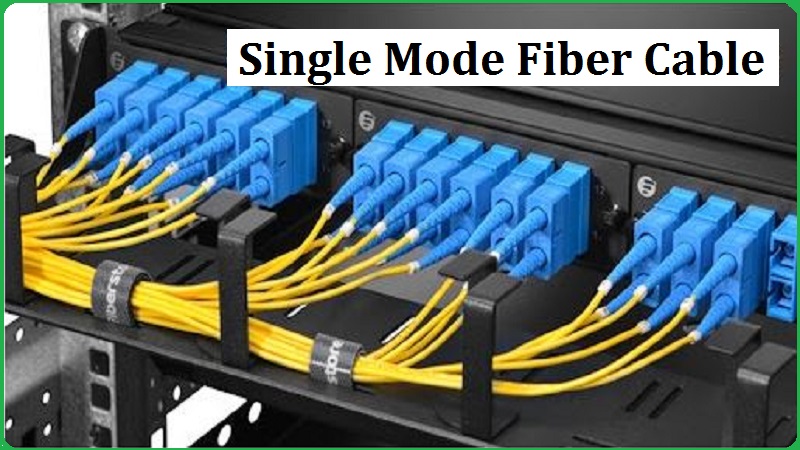What is Single Mode Fiber?
Definition: Single mode fiber is also called the “Single-mode optical fiber, Uni-mode fiber, Mono-mode optical fiber and Single-mode optical waveguide.” Single mode fiber is a simply kind of optical fiber cable that allows to transmit data over the long distance, and it has small core diameter (9 µm). This single mode fiber has single glass fiber strand that help to transmit a single mode or beam of light.
Single mode fiber has ability to transmit data in one side that means its unidirectional mode fiber, and it can allow to carry higher bandwidths, but it requires to have light source with having a narrow spectral width.

Single mode fiber allows to users with highly transmission rate to near 50 times longer distance compare to multi mode fiber. However, this fiber is more costly compare to multi mode fiber.
Types of Single Mode Fiber
Single mode fiber is classified into two categorizes; like as
OS1 Fiber: It uses with wavelengths of 1310nm with maximum attenuation of 1 dB/km. This OS1 fiber gets specially design for using in indoor areas like as institute campus or small business in one building, and it has maximum range is 10 km. OS1 can support 10Gigabit and 10G Ethernet links.
OS2 Fiber: It is using with wavelengths of 1550nm with maximum attenuation of 0.4 dB/km. OS2 fiber widely used in outdoor applications like as street, underground, and two building along with maximum 200 km long distance. It can support 40G and 100G Ethernet links.
Other Types of Single Mode Fiber
There are different type of single mode fiber along with G.65x series; below mention each one –

Advantages of Single Mode Fiber
There are various benefits of single mode fiber over multi mode fiber, below mention each one:
Also Read: What is Fiber Optic Cable? Types and their Uses
- Less data dispersion and external interference
- In which, single input mode provides SMF to limit light scattering that help to decrease light waste and enhance data transmission data.
- Fastest transmission speed and it can support data transmission speed rate up to 40Gbps.
- Enhance bandwidth capacity.
- Single mode fiber cable is optimal solution for long distance transmission.
Disadvantages of Single Mode Fiber
There are various limitations of single mode fiber over multi mode fiber, below mention each one –
- More Expensive: Single mode fiber components and equipments are highly costly compare to multi mode fiber, because on the device side, it uses the solid state laser diodes.
- It’s not easier to manufacture and handle SMFs compare to MMFs.
- It’s also not easier to couple light into a single mode fiber compare to multimode fiber because it has small fiber core diameter internally. So, it needs much tighter tolerance.
Applications of Single Mode Fiber
Single mode cable is mostly using in several applications where to need only one cable for sending at the multi-frequency (WDM Wave-Division-Multiplexing); such as –
Also Read: Advantages and Disadvantages of Fiber Optic Cable
- Local area network as well as point to point links in many cities
- One and multiple buildings
- Small and medium scale companies
- College campuses



